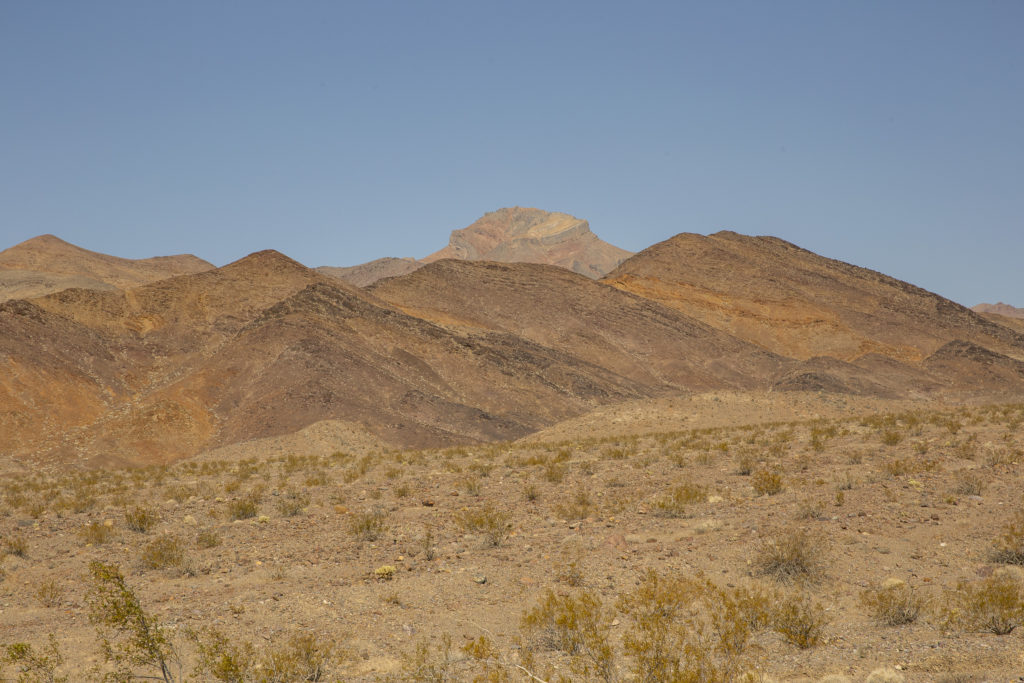JoAnn had planned a hike at Keane Wonder Mine for Sunday morning, October 27, and a hike to Telegraph Canyon for Sunday afternoon, and Diana, Kelly and I had intended to keep her company; but Saturday night, a tremendous wind arose and blew all our plans into a cocked hat. Nevertheless, we decided to take a drive down toward the mine, if for no other reason than to see how bad things in Death Valley were.
To get to Keane Wonder Mine from Beatty, you take the Daylight Pass Road to Hell’s Gate, turn off at the Beatty Cutoff Road, and go another 4.7 miles to the Keane turnoff, which takes you onto a dirt road, on which you bump along for another 2.8 miles to the parking lot.
When we got to Hell’s Gate, it was obvious that the situation in Death Valley was not good. The floor of the Valley was obscured by an enormous dust cloud.
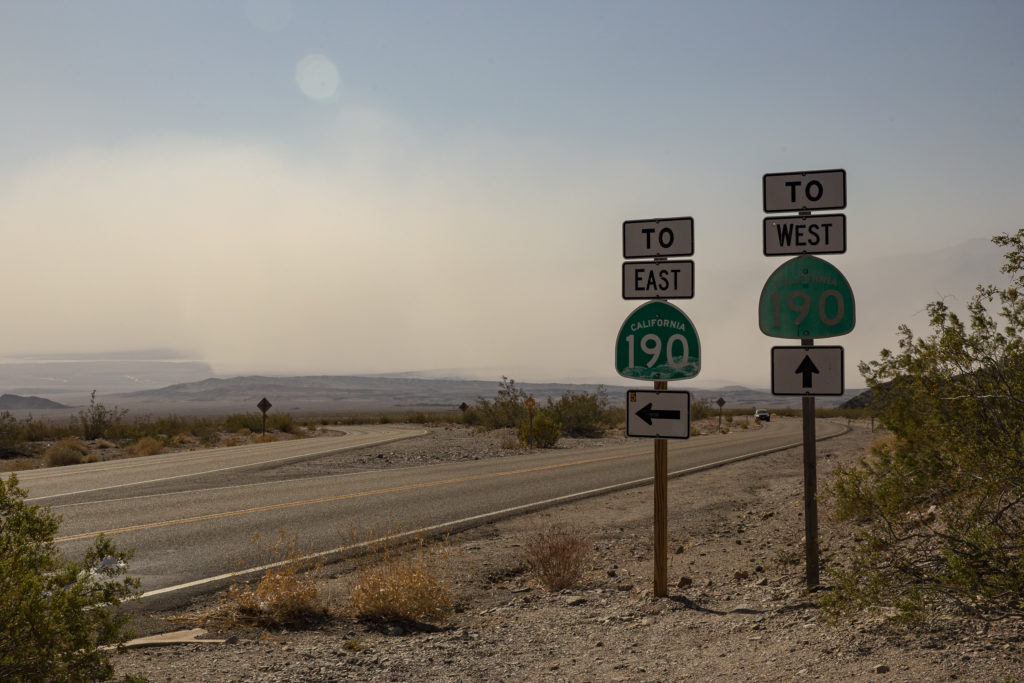
However, the dust cloud did not reach up to the Keane Wonder Mine turnoff, which is less than halfway to the Valley floor, so we persevered. And when we got to the turnoff, the dust cloud didn’t look any closer than it had from Hell’s Gate.
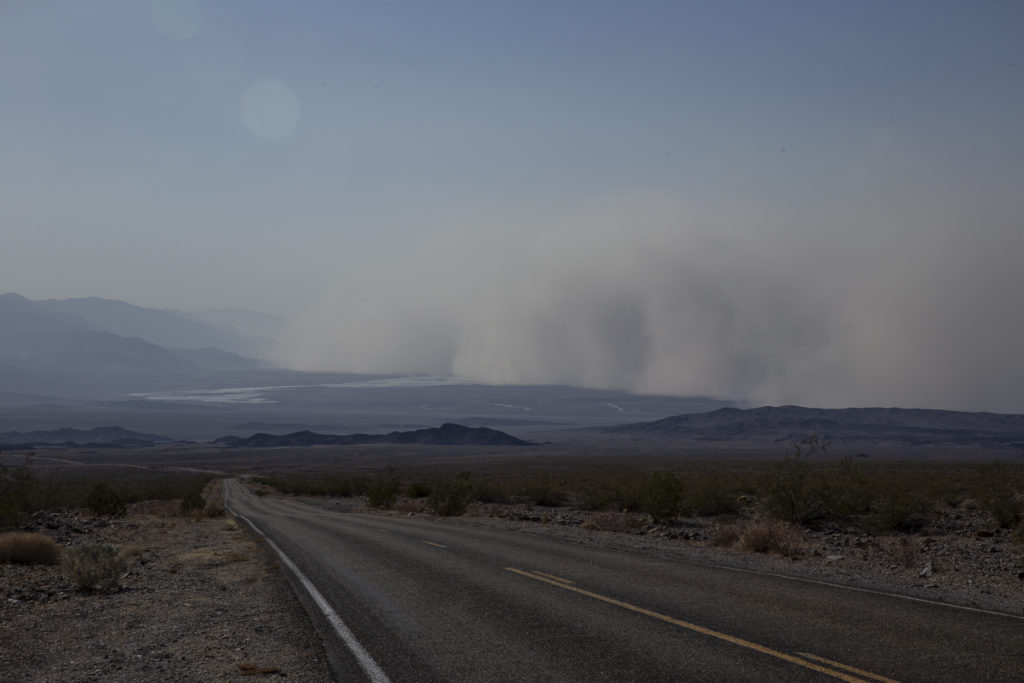
Once you get to the parking lot, you have to hike a short way uphill to reach the mine camp and mill area.
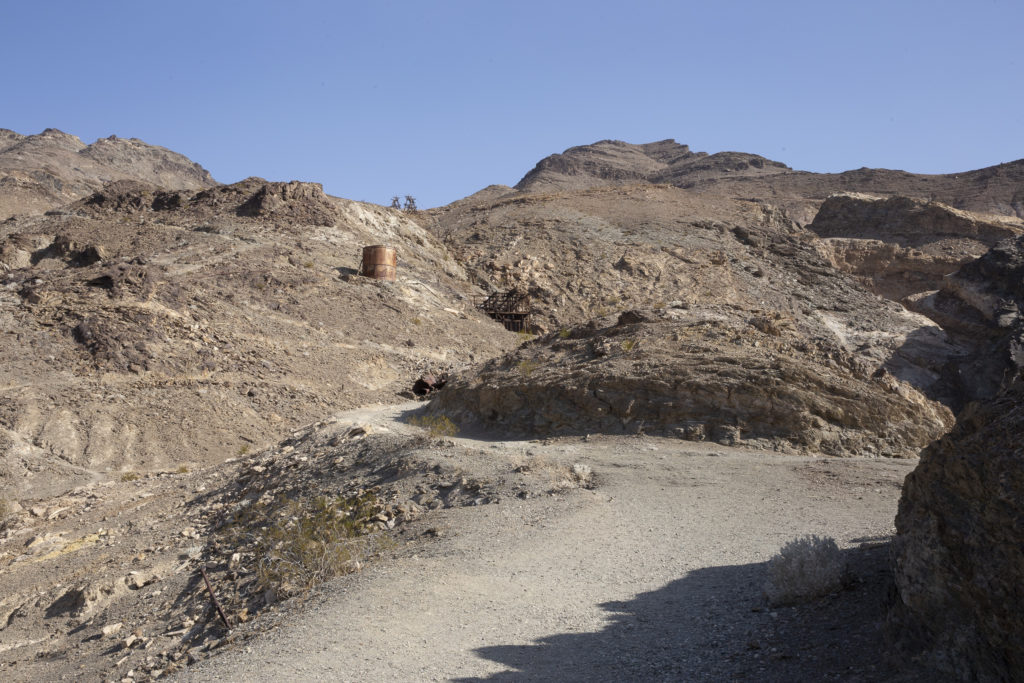
To be clear, the mine itself is at the top of the ridge, 1,500 feet up from the camp. An aerial tramway connects the camp to the mine. I wanted to take the tramway, but it turned out that it wasn’t operating that day.
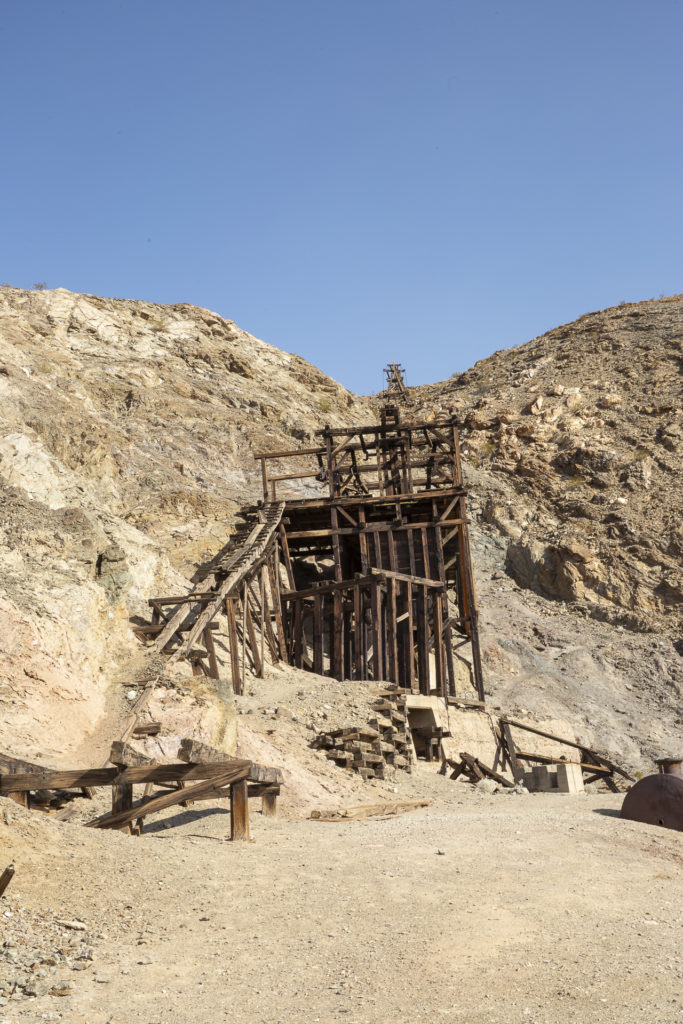
Actually, the aerial tramway hasn’t operated since at least 1941. The alternative is to take a steep path up the hill, which climbs the 1,500 feet in 1.4 miles, and that was what JoAnn and Kelly proposed to do.
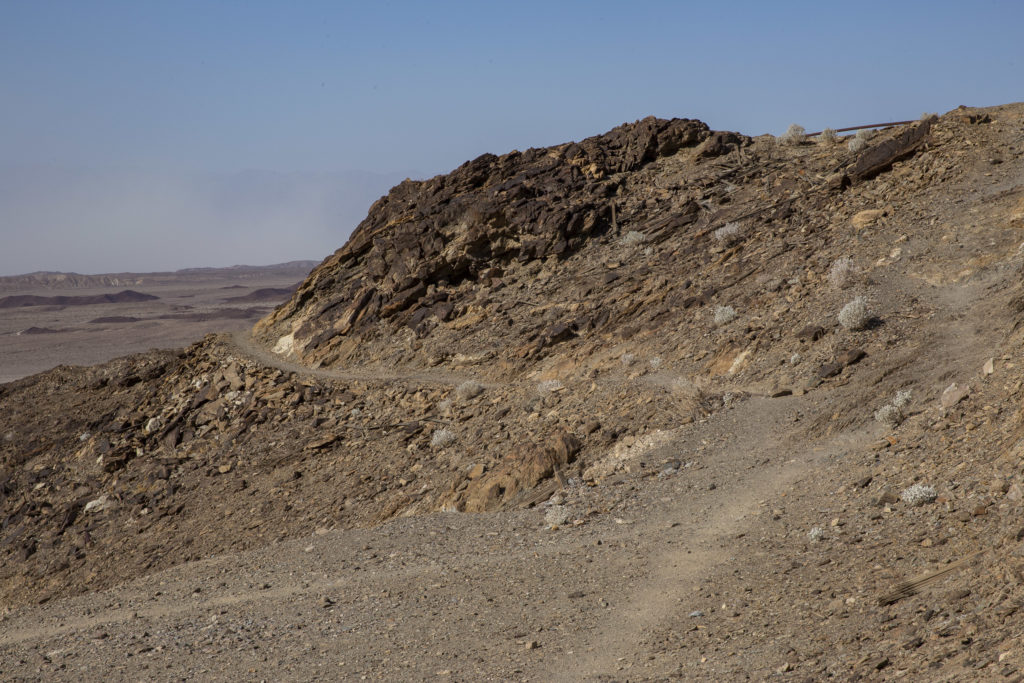
But in the end, we decided to leave that hike for another trip. The wind was blowing as hard as ever, and we weren’t sure that the dust storm wouldn’t blow up from the valley to engulf us before we could get up to the top and down again. So we settled for just checking out the camp and mill area, which was interesting enough.
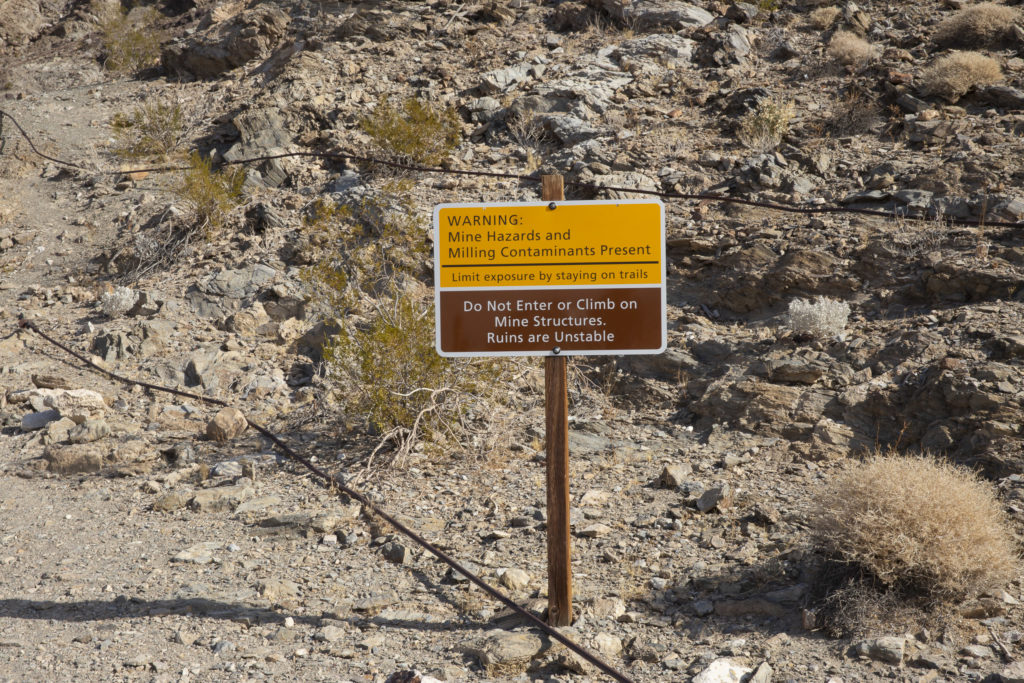
There were signs posted along the trail to the mill area warning about mine hazards, contaminants, etc. and enjoining people not to enter or climb on mine structures. I couldn’t imagine why anyone would have thought they were necessary; everything seemed to be perfectly new, spiffy and in great working order.
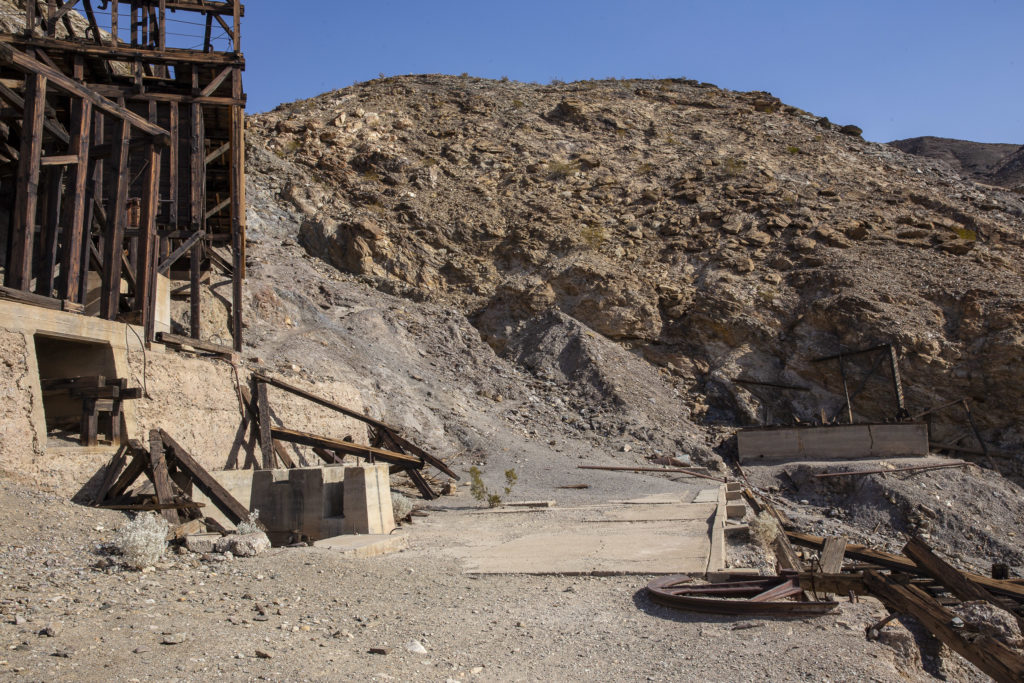
Among the mine relics we saw was a huge cylindrical tank, which at first I mistook for a stranded WWI German U-boat. Lots of water was necessary to process the ore from the mine, and this tank was where it was stored. The tank seemed to be in surprisingly good shape considering it was abandoned at least 80 years ago.
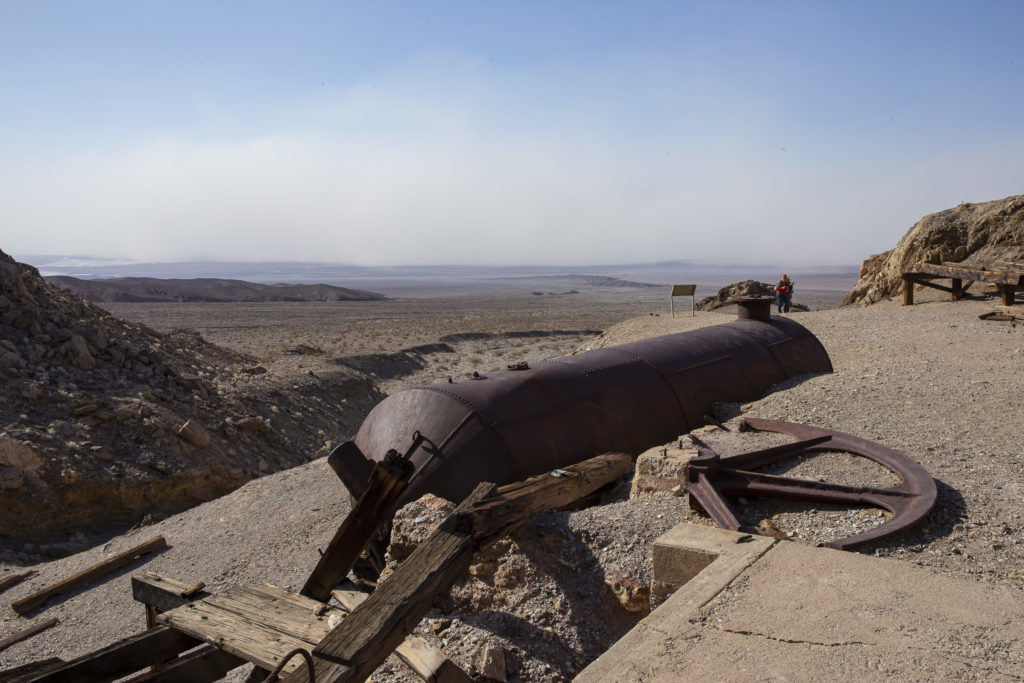
Heading back toward the parking lot, I happened to notice this odd-looking hill off to the side of the path; it sported a rock formation which resembled a giant lizard climbing up the side of the hill. A real lizard that big would have been pretty scary.
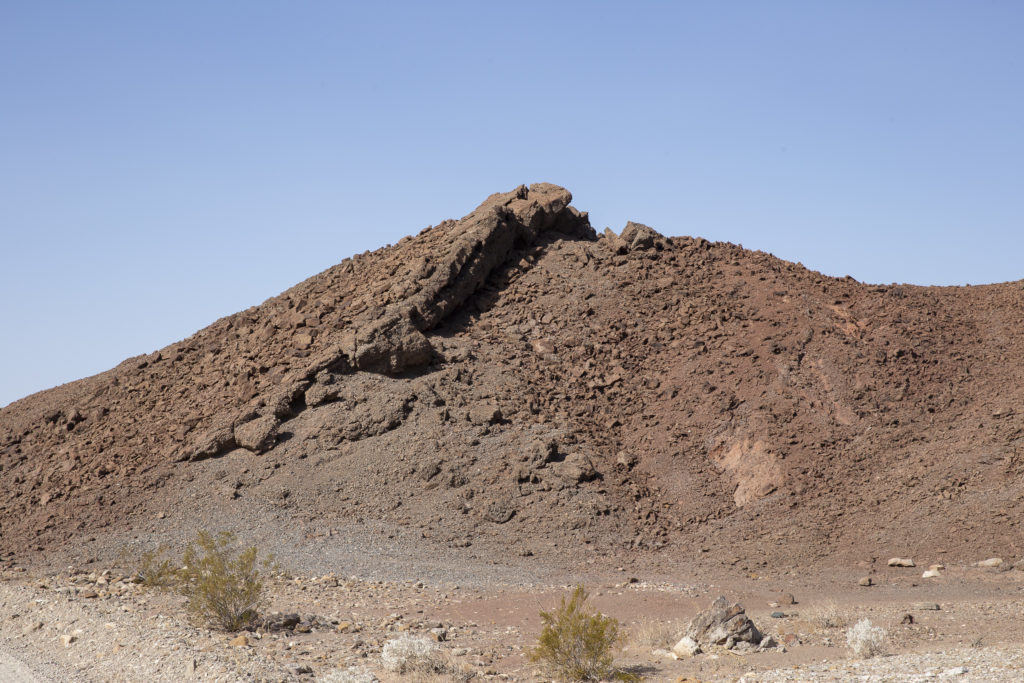
Not wishing to have our windshields sandblasted, we avoided going down any further into the Valley, and instead headed back to Hell’s Gate and thence to Beatty.
